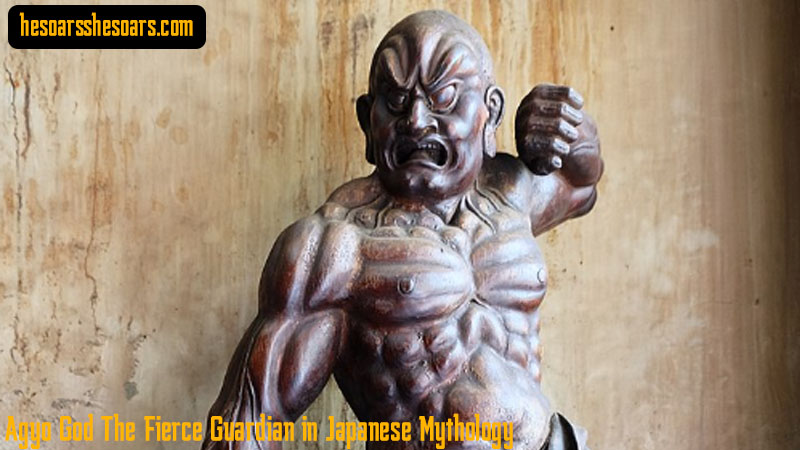Japanese mythology. Is. Filled. With fascinating. Creatures and deities, each with its unique role and symbolism. One of these intriguing figures is Agyo God, a fierce and imposing guardian often found at the entrances of Buddhist temples and other sacred places. In this article, we will delve into the mythology of Agyo, exploring its origins, significance, and cultural impact.
Origins of Agyo God
Agyo. Also. Known. As A-niō (阿仁王) in. Japanese. Is. Derived. From the Sanskrit word “Achala,” which means “immovable” or “unshakable.” This name reflects Agyo’s role as a guardian and protector. Agyo is. Typically depicted. As a fearsom. And muscular. Figure with. A wrathful. Expression. Its origins. Can be. Traced back. To the. Esoteric traditions. Of Buddhism. Particularly the. Teachings of. Shingon Buddhism. And Tendai Buddhism.
Guardian of Temples and Sacred Places
Agyo serves as a guardian and protector of Buddhist temples, shrine gates, and other sacred locations. It is. Often paired. With. Another. Guardian known. As Ungyo (or Un-niō). Creating a complementary and balanced duo. Together. They are. Called Agyo-Ungyo. And they. Symbolize the. Birth and. Death cycle. As well as the beginning and end of all things.
Agyo’s role is to ward off evil spirits and malevolent influences from entering these sacred spaces. Its fierce appearance is meant to intimidate and deter any potential threats, both physical and spiritual. Agyo is believed to have the power to keep negative energies at bay and maintain the sanctity of the temple or shrine.
Physical Characteristics
Agyo is typically depicted as a muscular figure with a menacing expression. Its mouth is often wide open, revealing sharp teeth and a protruding tongue. This ferocious appearance is intended to scare away any evil beings and protect the sacred site it guards. Agyo’s exaggerated features, such as its bulging eyes and wild hair, further emphasize its formidable presence.
Cultural Significance
Agyo’s significance extends beyond its role as a temple guardian. It has become an iconic symbol of Japanese Buddhism and is frequently featured in various forms of art and culture. Agyo’s fierce visage can be found in traditional Japanese architecture, such as temple gates and rooftops, as well as in sculptures and statues.
Furthermore, Agyo’s representation has made its way into popular culture. It has appeared in anime, manga, video games, and contemporary art, often reimagined in different contexts while retaining its formidable character.
Spiritual and Symbolic Meanings
In addition to its protective role, Agyo holds spiritual and symbolic meanings in Japanese Buddhism. It represents the wrathful and fierce aspect of Bodhisattvas, enlightened beings who vow to help all sentient beings attain enlightenment. Agyo embodies the determination and strength required to overcome obstacles and conquer inner demons.
Agyo’s wide-open mouth symbolizes the vocalization of the “ah” sound, which represents the beginning of all things and the first letter of the Sanskrit alphabet. This sound is associated with creation and the emergence of consciousness.
Conclusion Agyo God
Agyo, the fierce guardian of Japanese temples and sacred places. Is a captivating figure deeply rooted in the country’s rich mythology and religious traditions. Its imposing appearance serves as a reminder of the protective forces at work in the spiritual realm, and its symbolism carries profound meanings related to creation, protection, and inner strength. Whether encountered at the entrance of a Buddhist temple or in the realms of popular culture, Agyo continues to leave a lasting impression on those who encounter its fearsome presence.




